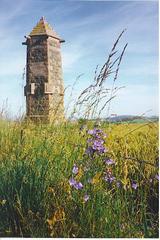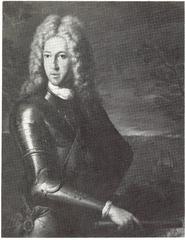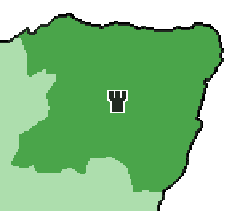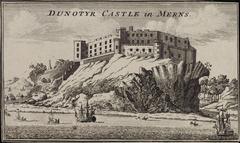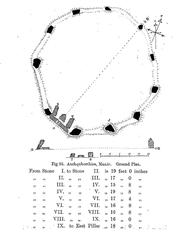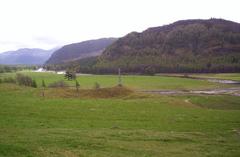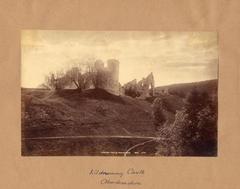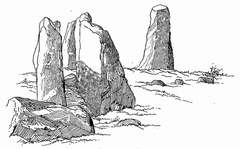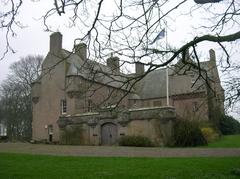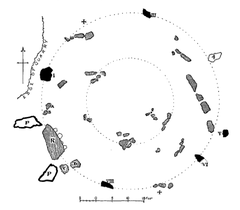St Moluag’s Church Visiting Hours, Tickets, and Historical Significance in Ballater
Date: 14/06/2025
Introduction: St Moluag’s Church and Its Importance in Ballater
St Moluag’s Church, situated in the scenic village of Tarland near Ballater in Aberdeenshire, stands as a significant monument to Scotland’s early Christian heritage and enduring community spirit. Dedicated to St Moluag, a 6th-century Irish missionary renowned for his evangelism among the Picts, the church offers insight into the evolution of Scottish ecclesiastical history and Celtic Christian traditions (trueorthodox.eu). The present building, a Gothic Revival masterpiece designed by William Smith and completed in 1870, features stugged granite walls, pointed-arch windows, and a broached spire, making it a distinctive local landmark (historicenvironment.scot). Beyond its architecture, St Moluag’s Church remains a vibrant hub for the united Parish of Cromar, serving several historic parishes including Coull, Migvie, Logie Coldstone, and Tarland (aboyne-dinnet-cromar-churches.org.uk).
Visitors can explore the church’s sacred interiors, view medieval artefacts such as cross-incised stones, and enjoy the tranquil churchyard with views of the Howe of Cromar. The church is accessible, offers free admission, and provides guided tours by arrangement, making it welcoming for history enthusiasts, spiritual seekers, and casual travelers alike (undiscoveredscotland.co.uk). Nearby, attractions like Tomnaverie Stone Circle, Cairngorms National Park, and Tarland’s friendly amenities offer further enrichment.
Contents
- Introduction
- St Moluag’s Legacy and Influence
- Architectural and Artistic Heritage
- Pilgrimage, Rituals, and Local Customs
- Pagan and Christian Traditions Interwoven
- Visiting Information: Hours, Tickets, and Accessibility
- Architectural Features
- Religious and Cultural Significance
- Walking and Heritage Trails
- Nearby Attractions
- FAQs
- Tips for a Memorable Visit
- Community Engagement and Events
- Visual Highlights
- Conclusion and Call to Action
St Moluag’s Legacy and Enduring Influence
St Moluag’s Church is a testament to the missionary influence of St Moluag, whose work in the 6th century shaped Scotland’s spiritual landscape (Wikipedia). He founded several monastic communities, including Lismore, and his legacy lives on through churches dedicated to him in Tarland and elsewhere in Aberdeenshire. Local traditions, such as the historic “Luoch Fair” in Tarland, reflect the region’s deep-rooted veneration for the saint (Wikipedia).
The church symbolizes community continuity, having served as a spiritual and social center for centuries. Events like the 150th anniversary of the current building in 2020 underscore its ongoing importance (Cromar Parish Church).
Architectural and Artistic Heritage
The present church, completed in 1870, showcases Gothic Revival style with distinctive granite construction and a tower with a broached spire added in 1890 (historicenvironment.scot). The interior features a single nave, wooden pews, stained glass windows depicting biblical scenes and St Moluag’s life, and memorial plaques honoring local figures. Its understated elegance is complemented by a tranquil churchyard, mature trees, and a variety of gravestones (canmore.org.uk).
Pilgrimage, Rituals, and Local Customs
St Moluag’s Church is part of a network of Scottish sites celebrating the saint’s legacy, with traditions including annual fairs and commemorative services. While relics such as St Moluag’s bell and crozier are housed at Lismore, Tarland’s customs and events maintain a vibrant connection to its early Christian heritage (Wikipedia).
Interplay of Pagan and Christian Traditions
St Moluag’s missionary work in Scotland exemplifies the blending of Christian and pre-existing pagan traditions, particularly at sites like Lismore, which held religious significance before Christianization (Wikipedia). This synthesis is echoed in Tarland’s enduring customs and community celebrations.
Visiting St Moluag’s Church: Practical Information
Visiting Hours
- General Opening: Daily, 9:00 AM–5:00 PM (hours may vary on holidays and for special events; check the Cromar Parish Churches website for updates).
- Service Times: Regular worship on Sundays at 10:30 AM.
Admission and Tours
- Entry: Free; donations appreciated.
- Guided Tours: Available by appointment for individuals and groups; contact the parish office to arrange.
Accessibility
- Mobility Access: Ramped entrance, accessible toilets, and level flooring in main areas. Some historic sections may have limited access; advance contact recommended for specific needs.
Location and Travel
- Address: St Moluag’s Church, Cromar Drive, Tarland, Ballater, Aberdeenshire, AB34 4ZQ, UK
- Getting There: By car, with parking opposite the church. Limited Stagecoach bus services connect Tarland to Ballater and nearby towns (Garioch.info).
Facilities
- Refreshments: Not provided on-site; nearby options include Angie’s Café, Commercial Hotel, and Aberdeen Arms Hotel (Housity.net).
- Restrooms: Accessible toilets available.
Architectural Features and Setting
St Moluag’s Church is constructed from locally quarried granite, with a steeply pitched slate roof and pointed-arch windows characteristic of Gothic Revival style. The modest bellcote, wooden doors, and stained glass windows add to its historical charm. The churchyard, enclosed by a dry-stone wall, features gravestones of varying ages and war memorials, and is shaded by mature trees.
A small car park sits opposite, and the church’s setting on the edge of Tarland offers tranquil views over the Howe of Cromar and easy access to local walking trails (Tarland.org.uk).
Walking and Heritage Trails
St Moluag’s Church is a key waypoint on popular walks including:
- Tarland-Tomnaverie Stone Circle Circuit: An 8.1 km circular walk beginning and ending at the church, passing through scenic countryside and the prehistoric Tomnaverie Stone Circle (Garioch.info).
- Drummy Woods Walk: A shorter 4 km route through woodland and farmland.
Maps and guides are available at Tarland.org.uk.
Nearby Attractions
- Tomnaverie Stone Circle: Ancient recumbent stone circle dating back over 4,000 years (Historic Environment Scotland).
- Tarland Heritage Centre: Exhibits on local history (Housity.net).
- Alastrean House: Historic country house linked to the MacRobert family (Tarland.org.uk).
- Tarland Golf Course: Designed by Tom Morris, adjacent to the church.
Frequently Asked Questions (FAQ)
Q: What are the opening hours?
A: Daily, 9:00 AM–5:00 PM; check for seasonal or event variations.
Q: Is there an entry fee or are tickets required?
A: No, entry is free; donations are welcome.
Q: Are guided tours available?
A: Yes, by appointment; contact the parish office.
Q: Is the church accessible for people with disabilities?
A: Yes, with ramps and accessible toilets; contact in advance for specific needs.
Q: Are refreshments available on-site?
A: No, but several options are nearby in Tarland Square.
Q: How do I reach the church by public transport?
A: Limited bus service; check Stagecoach timetables.
Tips for a Memorable Visit
- Plan Ahead: Confirm hours and events via the parish website.
- Combine Visits: Explore local walks and heritage sites for a richer experience.
- Respect the Site: This is an active place of worship—be considerate during services.
- Photography: Allowed, but avoid flash and be respectful.
- Stay Local: Consider local accommodations for an extended visit.
Community Engagement and Cultural Events
St Moluag’s Church hosts concerts, festivals, and community gatherings, strengthening its role as a cultural hub. Annual celebrations and commemorations, such as the church’s anniversary, reinforce its connection to Tarland’s heritage.
Visual Highlights
Enhance your visit with images of the church’s exterior, stained glass, and tranquil churchyard, available on official and local heritage websites. Virtual tours and videos are offered during special events.
Conclusion and Call to Action
St Moluag’s Church in Tarland is a remarkable destination where history, faith, and community converge. Its architectural beauty, spiritual significance, and role in local tradition make it a must-visit site for anyone exploring Aberdeenshire. For updated information and downloadable guides, visit the parish and community websites, and consider using the Audiala app for interactive tours.
Begin your journey today—discover the enduring story of St Moluag’s Church and the treasures of Tarland.
Sources and Further Reading
- Visiting St Moluag’s Church in Tarland, Ballater: History, Hours & Visitor Information (trueorthodox.eu)
- Cromar Parish Churches History (aboyne-dinnet-cromar-churches.org.uk)
- Historic Environment Scotland Listing LB19790 (historicenvironment.scot)
- Visiting St Moluag’s Church in Tarland: Hours, Tickets & Architectural Highlights (undiscoveredscotland.co.uk)
- Tarland Walking Routes and Heritage (Garioch.info)
- Tarland Community Website (Tarland.org.uk)
